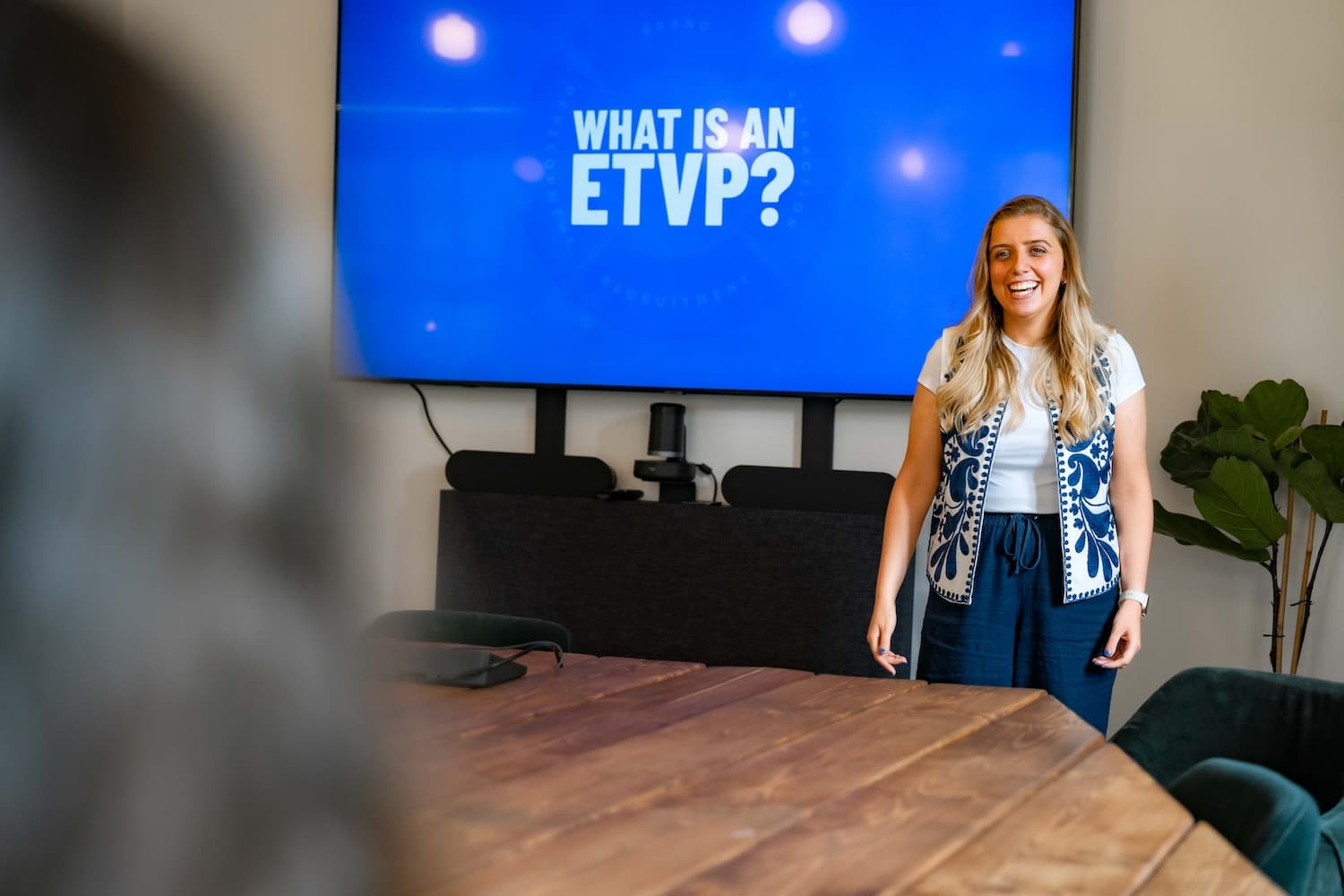Early talent are more switched-on than ever before. If you want them to choose you, you’ve got to grab their attention — and keep it.
A similar analogy can be made when looking at popular culture. In 2009, Avatar was the first film to gross more than $2 billion, and it certainly enticed viewers across the globe to watch (and re-watch) the movie. Now they’ve built their brand, they are looking to build on that existing success with a sequel film — but the brand alone is not enough to keep the momentum going. In order to level-up, the sequel needs to retain existing fans and attract new ones by developing the story to keep them all engaged.
A similar formula drives success in the early talent market, and it’s the sum of four key components: brand, attraction, recruitment, and development.
If you want candidates to choose you, you’ve got to nail all elements of the equation.
Step One: Brand
The pandemic resulted in a tumultuous market; in 2020 the number of graduate jobs on offer fell by 12% and employers were in control. Most candidates, desperate for security, would accept whatever was on offer, and an employer’s early talent brand mattered less. Companies had confidence in the fact that graduate talent were bound to engage with them in a reduced market. However, as the world re-opened, so did graduate prospects — and now they’re in the driver’s seat. Candidates have begun to hedge their bets by applying for multiple roles and choosing the best of the bunch. Thus, it's almost impossible to predict candidate intentions, with 35% of students expressing a willingness to renege on their offers. If you don’t speak to early talent directly, your talent pool will vote with their feet.
Step Two: Attraction
Once you’ve built your early talent brand, you need to attract the right talent. It’s no longer enough to expect graduates to come to you and engage like they have before — you must meet them in their own social circles. Authentic promotion via student brand ambassadors and societies is now the best way to place your brand in the minds of prospective candidates. As a cohort whose entire lives moved online overnight, online event fatigue is felt heavily amongst students — and many students are still trapped in an online University experience. If you don’t ignore the ordinary with your graduate recruitment methods, you’ll find this reflected in your results.
Step Three: Recruitment
Alongside a great brand and attraction methods, you need a slick and inclusive recruitment process.Your process must unlock the potential of your candidates, whilst ensuring they have an experience worth writing home (or on glassdoor) about. At the same time, you want to make sure early talent are excited by your brand, and feel connected to your mission. The market is fast-paced, with many students landing their first offer between months one–three of their search. However, over half of students continue to apply for roles following their first offer, so a great recruitment strategy is key now more than ever, and you need to ensure candidates are kept engaged post-offer. As such, your recruitment process needs to be high-touch.
Step Four: Development
Once you’ve secured the right graduate talent, the final step is to develop and retain them. Gen-Z demands more from their employer than any other generation — and it’s not just about money. When looking for a role after graduating, the most important factor for students are actually the learning and development opportunities on offer during the programme. It’s essential that you invest in graduate development to keep your talent engaged and help them feel bought into their roles and your company culture. A development offering that delves deeper than your average onboarding session is critical to future-proofing your organisation. Effective development programmes will place the next generation of leaders in your hands.
So, how does this link back to Avatar?
Avatar has a brand that gets people excited, but that isn’t enough to guarantee they’ll attract new fans, or keep them, this time around. In order to remain relevant, you need to meet those you wish to attract — Avatar’s collaboration with Mercedes Benz demonstrates this well. A solid brand, that you’ve seen work before, is no longer enough. Continuous development is key to success, and if you’re looking for a picture-perfect early talent programme you must nail four key things: brand, attraction, recruitment, and development.




